|
McCAIN'S
HANOI HILTON
On 10 September 1966 US Pilot Douglas "Pete" Peterson flew his last mission over Northern Viet Nam. His plane went down in flames over the Red River Delta. After his capture he was taken to the Hoa Lo Prison in central Ha Noi, sarcastically dubbed the "Hanoi Hilton" among the US Prisoners of War, who were kept there until March 1973, after the peace agreement finally had been signed.
A year after Peterson's capture he was joined by another pilot John McCain, who was shot down on 26 October 1967 after a bombing run in his A-4 Sky Hawk fighter bomber. John McCain parachuted down in Truc Bac Lake, in the suburbs of Ha Noi, less than 500 meters from Ho Chi Minh's residence.
The two pilots are the most prominent of the 766 American Prisoners of War (POW) who were captured. According to Pentagon statistics 114 died in captivity - from injuries or disease. It is still a matter of argument, how the American prisoners were treated. Both sides were known to use harsh interrogation techniques during the war, and some former POW's claim that they were badly beaten by prison guards in order to extract information or make the pilots step forward on press conferences and denounce the American war in Viet Nam.
The Vietnamese authorities consistently reject that any maltreatment of POW´s took place. However, there is no doubt that the years in Hanoi Hilton were a very tough time for the pilots. The old French security prison had been constructed to be a very unpleasant place for the Vietnamese anti-colonial cadres. Food, clean water and medicine were very scarce for the Vietnamese themselves. Rations were cut down to an absolute minimum everywhere in the North.
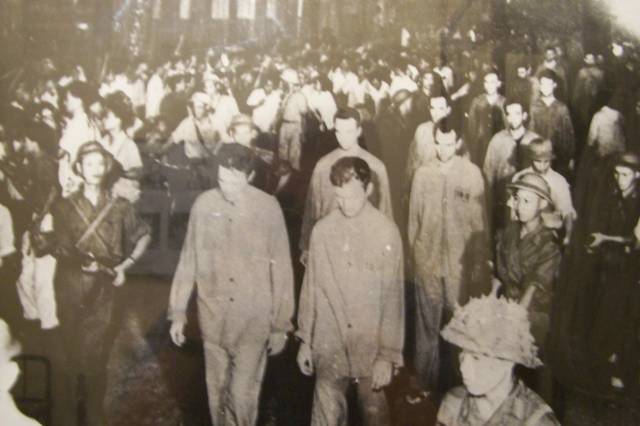
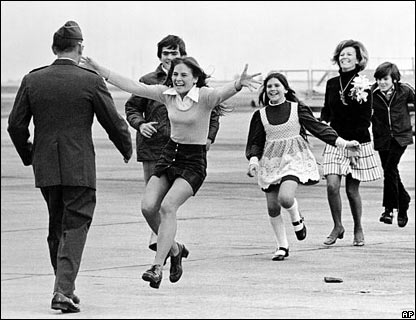
US prisoners of war are marched through streets of war time Ha Noi. Lieutenant Colonel Robert L Stirm is met by his family at a military base in California on his return from years of captivity in Ha Noi.
Almost all of North Vietnam's 700 bridges had been bombed by US pilots. In Ha Noi the only supply line over the Red River was the old Long Bien Bridge. In order to prevent this life line from being smashed, Ha Noi made it known to Washington, that the American POW's were forced to take turns as 'guardians' on the bridge. The bridge and the pilots survived during the countless bombing raids over the Red River Delta.
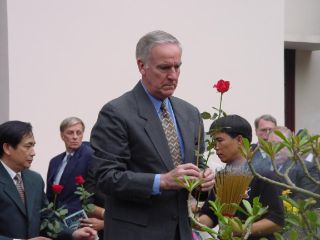 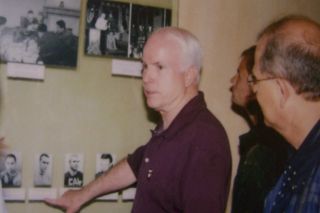
Ambassador Peterson is putting a rose on the remains of US soldiers to be returned home through the joint US-Vietnamese search program for soldiers missing in action. Senator McCain in Hoa Lo museum showing war time photos of Ambassador Peterson and himself.
Peterson as well as McCain returned to Ha Noi 25 years after their release from the Hanoi Hilton. Peterson came back as the first US Ambassador to Ha Noi in 1997, appointed by President Clinton. McCain came to Viet Nam as a US Senator. McCain used the opportunity to meet with the old coppersmith, that had fished him out of the Truc Bac Lake.
Peterson became a very popular figure in Ha Noi for his easy going and amiable manner, and it did not hurt his image at all, when he married a beautiful and sharp Vietnamese lady, who had returned from overseas to work at the Australian embassy. In 2001 president Bush replaced Peterson with a Vietnam Era career diplomat, Raymond Burghardt, who had served as a junior diplomat at the US Embassy in Saigon during the war - and had kept his anti-communist rethorics intact over the years. He never gained much respect among his counterparts in Ha Noi.
Most of the old prison was torn down in 1993 to make way for Hanoi Towers, a residential and shopping complex - one of the first major Singaporean investments in the North. The remaining part has been turned into a museum, which is well worth visiting, even if the obvious propagandistic features may not go down well with all visitors.
It is vividly described how hundreds of Vietnamese cadres died from disease, torture and executions in Maison Centrale, the official name during the French period. Several of the most prominent leaders like former party secretary Truong Chinh and former president Du Muoi narrowly escaped from the notorious death row of the prison. A two-room section is dedicated to the American POWs, complete with John McCains flight suit and helmet and a volley-ball net, which does not look like it was used a whole lot.
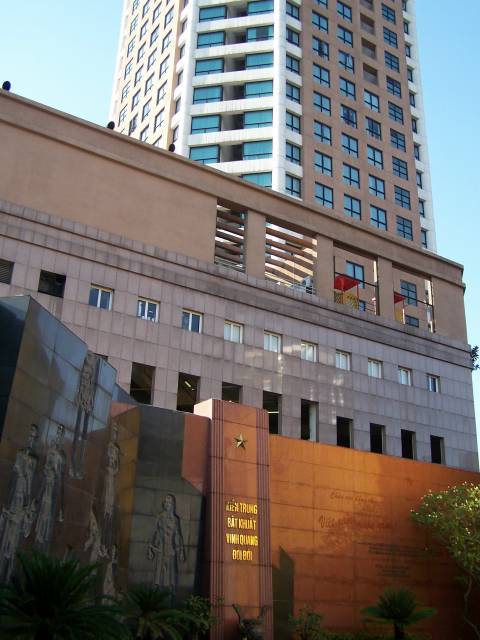
Hanoi Towers has replaced most of the old prison.
A memorial wall has been added to the original
structure to honor the hundreds of Vietnamese
cadres, who died in the prison during the French regime.
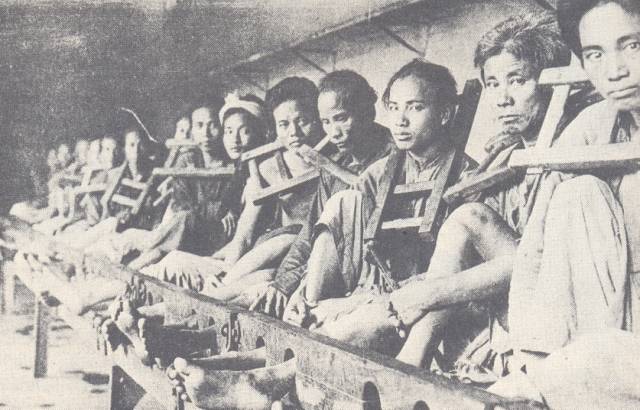
|